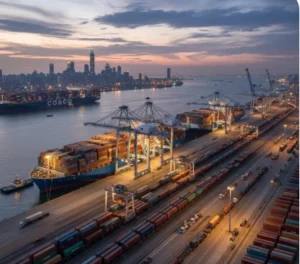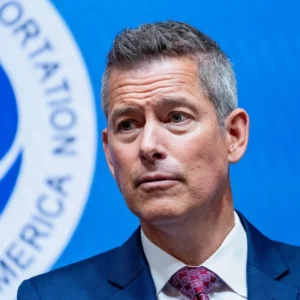Waymo’s robotaxis will begin operating in Atlanta in partnership with Uber.
Starting June 24, Waymo’s robotaxis will begin operating in Atlanta in partnership with Uber. This initiative, which debuted earlier this year in Austin, Texas, is part of a strategic collaboration between the two companies and has already been approved for implementation in Georgia’s capital.
In less than four months since the start of their partnership, Waymo and Uber have deployed nearly 100 fully autonomous vehicles in Austin. The expansion to Atlanta reaffirms both companies’ commitment to the roadmap they set out last September.

Waymo’s robotaxis arrive in Atlanta
In Atlanta, the system will function similarly to the one in Austin: robotaxis can be requested through the Uber app, with an option to choose a human-driven vehicle if the passenger prefers. Initially, the service will cover a 65-square-mile area within the Atlanta metropolitan market, with plans for further expansion, according to Transport Topics.
The Waymo app is already available in Phoenix, Los Angeles, and a growing portion of the San Francisco Bay Area. Thanks to its partnership with Uber, Waymo currently provides over 250,000 paid rides per week.
Alphabet’s decision to launch in Atlanta comes just days after Tesla rolled out a limited robotaxi service in Austin. However, unlike Waymo, Tesla still requires a safety driver on board to intervene if necessary. Waymo’s vehicles, on the other hand, operate in fully autonomous mode.

Robotaxi competition is heating up
Waymo is not the only company aiming to dominate this market. On one hand, Elon Musk has reiterated that Tesla’s robotaxi service could scale rapidly, while Amazon plans to launch its autonomous Zoox taxis in Las Vegas by the end of this year, with expansion to San Francisco expected in 2026.
Uber had also aimed to develop its own robotaxis. However, the company ultimately chose to pursue strategic partnerships to remain competitive in the autonomous transport sector. Currently, Uber maintains 18 partnerships with robotaxi operators worldwide and estimates it is on track to complete around 1.5 million autonomous rides annually—either for passenger transport or food delivery.
In April, the administration of President Donald Trump unveiled its first policy measures aimed at removing regulatory barriers for autonomous vehicles, as part of an effort to foster innovation in the sector and strengthen U.S. competitiveness against countries like China. These developments have encouraged companies to stay in the market and continue expanding their reach across the United States.

The U.S. Leads Global Growth in Intermodal Transportation
Intermodal transportation is entering a decade of rapid worldwide expansion, driven by growing demand for logistics efficiency, mounting cost pressures, and the global shift toward more sustainable freight systems.

California CDL Scandal Triggers 17,000 License Revocations After Federal Audit
California CDL Scandal Triggers 17,000 License Revocations After Federal Audit

Northern Lights Illuminate U.S. Highways and Surprise Nighttime Truckers
The Northern Lights dazzled drivers across the United States, painting the night sky in vivid colors from Minnesota to Alabama — a rare celestial show that turned ordinary highways into glowing horizons.

Operation Midway Blitz in Indiana leads to 146 truckers arrested
Operation Midway Blitz was carried out in coordination with the Indiana State Police, resulting in the arrest of 146 truck drivers. Raids conducted by the

Truckers for Troops: the trucking industry supports veterans
During Veterans Day, the trucking industry shows its support for active-duty service members and veterans. On November 11, we honor those who have served the

Cargo Theft: Why the Christmas Season Is the Most Critical Time of the Year
For the freight and logistics industry, Christmas brings enormous commercial opportunities—but also heightened exposure. Strengthening cargo security is not only a matter of technology or policing. It requires strategic planning, trained personnel, consistent internal protocols, and a culture of prevention.
